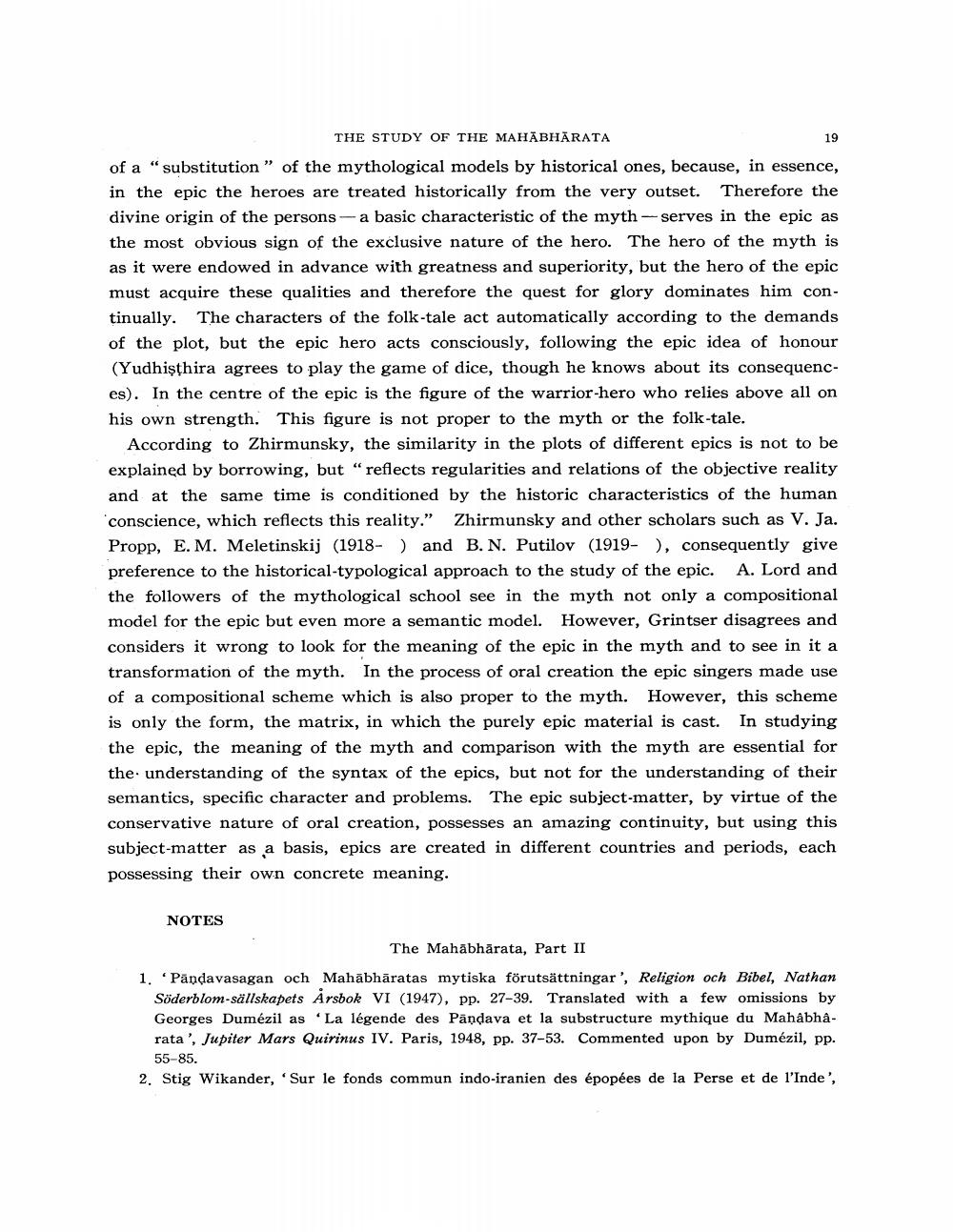________________
19
THE STUDY OF THE MAHABHARATA of a "substitution" of the mythological models by historical ones, because, in essence, in the epic the heroes are treated historically from the very outset. Therefore the divine origin of the persons - a basic characteristic of the myth - serves in the epic as the most obvious sign of the exclusive nature of the hero. The hero of the myth is as it were endowed in advance with greatness and superiority, but the hero of the epic must acquire these qualities and therefore the quest for glory dominates him continually. The characters of the folk-tale act automatically according to the demands of the plot, but the epic hero acts consciously, following the epic idea of honour (Yudhişthira agrees to play the game of dice, though he knows about its consequences). In the centre of the epic is the figure of the warrior-hero who relies above all on his own strength. This figure is not proper to the myth or the folk-tale.
According to Zhirmunsky, the similarity in the plots of different epics is not to be explained by borrowing, but “reflects regularities and relations of the objective reality and at the same time is conditioned by the historic characteristics of the human conscience, which reflects this reality." Zhirmunsky and other scholars such as V. Ja. Propp, E.M. Meletinskij (1918- ) and B. N. Putilov (1919- ), consequently give preference to the historical-typological approach to the study of the epic. A. Lord and the followers of the mythological school see in the myth not only a compositional model for the epic but even more a semantic model. However, Grintser disagrees and considers it wrong to look for the meaning of the epic in the myth and to see in it a transformation of the myth. In the process of oral creation the epic singers made use of a compositional scheme which is also proper to the myth. However, this scheme is only the form, the matrix, in which the purely epic material is cast. In studying the epic, the meaning of the myth and comparison with the myth are essential for the understanding of the syntax of the epics, but not for the understanding of their semantics, specific character and problems. The epic subject matter, by virtue of the conservative nature of oral creation, possesses an amazing continuity, but using this subject matter as a basis, epics are created in different countries and periods, each possessing their own concrete meaning.
NOTES
The Mahābhārata, Part II
1. Pandavasagan och Mahābhāratas mytiska förutsättningar', Religion och Bibel, Nathan
Söderblom-sällskapets Arsbok VI (1947), pp. 27-39. Translated with a few omissions by Georges Dumézil as La légende des Pāndava et la substructure mythique du Mahâbharata', Jupiter Mars Quirinus IV. Paris, 1948, pp. 37-53. Commented upon by Dumézil, pp.
55-85. 2. Stig Wikander, 'Sur le fonds commun indo-iranien des épopées de la Perse et de l'Inde',




